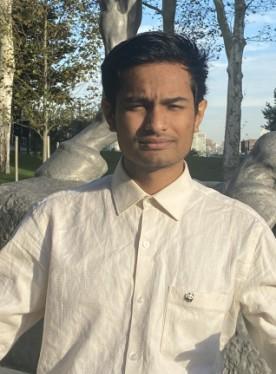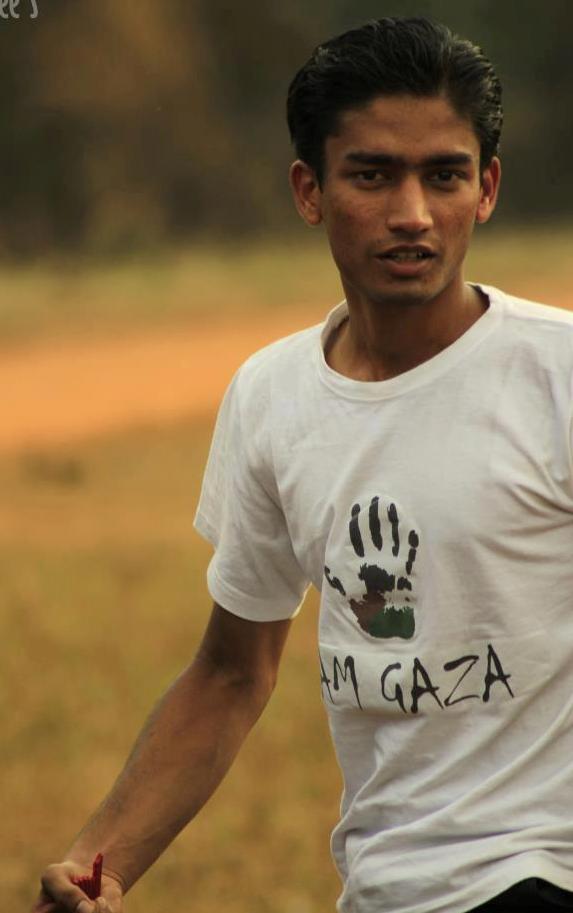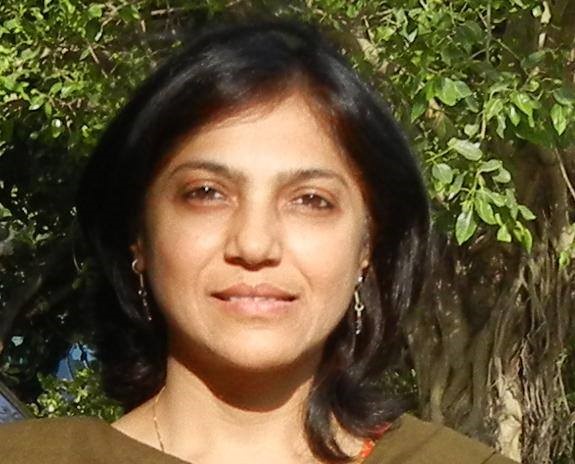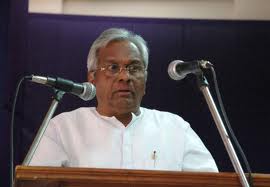Minkeng (Lùhng)
In what was once the peaceful state of Arunachal, the land where the sun first smiles, there has been a systematic attempt, by certain fringe elements to divide the Tani Community- be it creating hatred among Nyisis, Galos, Tagins or Adis, but also creating an atmosphere of hatred based on religiouns. This is something, that is relatively new to the Northeast, a region that has never seen religious intolerance- be it Manipur, Assam, or now Arunachal, this atmosphere is a malignant tumour, that grew only in the past decade. As a Christian and a Tani, hailing from this region, I find myself at the intersection of this push for tradition and modernity, grappling with the implications of our tribal status (ST) and the push to resist conversions to Christianity. Is adopting Christianity, tantamount to sacrificing our culture?
Before this, let me begin by addressing the term ‘ST’ – Scheduled Tribe. Although initially intended as a mechanism for safeguarding the rights of the indigenous people, it has now been used as a mechanism to create divisions among the people, it sought to protect. As a result, its application in Arunachal Pradesh and the wider regions of the northeast, has become a contentious issue, especially in light of the recent discourse surrounding tribal faiths and their relationship with Sanatana Dharma.
The Rashtriya Swayamsevak Sangh (RSS) has been vocal in proclaiming that tribal faiths fall under the umbrella of Sanatana Dharma, and in the context of Arunachal, through its mouthpiece: the “Indigenous Faith and Cultural Society of Arunachal Pradesh” has often provoked this debate of us Tanis being historically connected to Shiva. So, what is the truth? After visiting a Donyi Polo Ganging, you would for sure say that it’s a Hindu sect, with all the agarvatis, and idolatry. While this assertion may seem inclusive on the surface, it fails to acknowledge the diverse and nuanced belief systems of indigenous communities in Arunachal Pradesh. Is Donyi Polo indigenous, or is it a fragment of cultural appropriation?
While Donyi Polo, often touted as the indigenous faith of Arunachal Pradesh, holds significance for some, its origins and authenticity are subject to debate. On closer examination of the Donyi Polo faith, we notice that this was started by, Talom Rukbo, a person influenced heavily by the RSS, as a way to counter Christianity. Even during the initial days of this religion, from its conception in 1968, we see that the vast amount of funds they received were from the RSS. As a result, we see large amounts of Hindu influences in the modern gangings, and there has also been an attempt to culturally appropriate figures such as “Pedong Nane”, “Doyin Botte” etc. as Hindu Gods and Goddesses, which to be honest is far from the truth. As a Tani, I can attest that our ancestral practices are rooted in traditions distinct from Hinduism. The form of worship, that my ancestors partook in was centred around ancestor reverence, influenced by elements of Confucianism and Taoism, rather than the pantheon of Hindu deities. These figures that have been idolized and connected with Hindu gods are referred to as “spirits”- “yapom” or “ooyu”, not gods. Indigenous Tani religion did not have a “god”. Our cultural history is clear on this front- the modern tanis are referred to as sons and daughters of Abotani, who happened to have two sons. As per cultural tales, tanis emerged from this one branch and the spirits emerged as descendants from the other son. The traditional faith of Tanis, before the 1968 Donyi Poloism, is therefore far from the concept of “Sanatan Dharma”, and this indigenous faith might be older than the latter.
Furthermore, the debate surrounding our tribal status extends beyond mere semantics. It touches upon issues of cultural preservation, resource exploitation, and historical injustices. So let’s talk about how well, the IFCSAP has managed to preserve the Tani Culture. If Tani culture entails, speaking Hindi, forgetting the indigenous language, lighting agarvati and diyas, wearing sarees & kurtas, and chanting Hindu chants, I would like to commend them. They have done an extremely great job in preserving the culture of our father, Abotani. May, Abotani, bless them, for they unlike Tani Christians haven’t converted their religion. Regarding the ST status, yes many of us Tani Christians question the necessity of being labelled as ‘ST’. We do not seek reservation; rather, we desire recognition of our inherent dignity and agency as a vibrant and resilient community. We want the Government of Arunachal, to not force Devanagari script down our throats, and to make the Tani language compulsory in schools. What we want is a distinct identity rather than being ST. The term tribal was used by post-independence India, to refer to a set of “uneducated, and people of the forest”, which is beyond the truth. I can proudly say that at one point, us northeasterns were more developed than the rest of mainland India. Us tanis, were among the first to use silk, also should I remind you that silk came to India via China through the northeast? Us Tanis were the first to use paper in the subcontinent. Us tanis were the ones the great Ahom empire, appealed to, to fend off the Mughals. Yes, we do not need this “ST”, but what we do need, is an institution that preserves our culture- a pan-united ILP for the whole Northeast. We want New Delhi, to recognize and acknowledge us as citizens of the country and not discriminate against us. What we need, is a separate identity and delimer to identify natives of the northeast.
Now, stating that is also quite essential to recognize the role of Christianity in safeguarding our language, culture, and heritage. Contrary to what the RSS mouthpiece would like you to believe, the church has been a steadfast ally in preserving our identity amidst external pressures. Let me cite instances of this. The first gospel that was preached in Arunachal, was translated into the native language. The church regularly holds proceedings in the native language and also encourages us to wear our native attires during Christmas and Easter. We celebrate many indigenous festivals such as Nyokum, Solung, and Si-Donyi, in the church. Now let’s contrast this, to the proclaimed so-called indigenous communities, and the RSS’s push to convert the Tani language, which is tonal in structure, to Devanagari- a non-tonal script. Why cannot we accept the diversity of India?
Moreover, the narrative of conversion must be contextualized within the broader historical context of the northeast. Let’s look at history. If there is a push to call Christianity a foreign religion, Hinduism and Satanism is as foreign to us. The region’s indigenous religions have always been distinct from Hinduism. The modern Assamese Hindus might have once had their religion called Dam-Phi (Phralung), and the Manipuri (Manipur before Hinduism was called Kangleipak) too had Shanamanism. Let’s recall how the adoption of Hinduism led to the destruction of major tracts of Manipuri culture: after a Bengali priest convinced the then king, Panheiba, the Puya or Indigenous Manipuri texts, were burned and destroyed on large scales. To preserve these scripts, the Maichou Tarets, or religious leaders of Kangleipak began hiding the Puyas and passing them off to the Nagas for safekeeping. Many were caught then, or those who opposed conversion to Hinduism, were massacred on a large scale. Even Parsuram khund did not exist in Arunachal till the early 1950s-60s and was created and propagated by the Hindus in Assam. Earlier, before the 1950s this site was referred to as Tailung and was an important cultural site for the Mishmis. I am not against Hinduism, but against the double standards and using cultural appropriation as a tool to make us Tanis, Hindus. It is crucial to acknowledge that religious beliefs evolve and are often influenced by socio-political dynamics. Religion is someone’s personal choice. If you want to profess and spread Hinduism, do so in a peaceful way. One of the tenets of the Indian constitution is the right to religion- anyone is allowed to propagate unless they don’t use con-artist tactics or violence. You cannot preach your religion, by claiming everything and every native religion to be Sanatan. Historically, we tanis have sacrificed mithuns, and cows as part of our indigenous faith, and associating yourself with this contradicts your religion, doesn’t it? Let the people decide what religion they want to practice, spread the word of your lord, and be humble- love the natives! My response to, Chaitra Krushna Paksha, in his article, “Battling the Christian Missionaries in North East India”, I would simply agree that us northeastern are the most accepting and that’s why we allowed, many Hindus to establish temples in our hometown. However do not take assume, that we would give up our culture or language. Do not tarnish others’ cultural heritage. Lastly, we all in Arunachal must acknowledge that we are Tanis and Indians, before nisi or galo, or Christian, Hindu or Donyi polo.
As a Tani, I would like to advocate for a reevaluation of ‘ST’ status again, and the adoption of a more inclusive framework for recognizing our unique identity and heritage. Yes, it is also the need of the hour to “re-evaluate”, “ST” in the Northeast. “ST” was one of the many reasons why Manipur burned, and Arunachal is on the verge of following suit. There should be a separate category for, “northeasterns”, distinct from the “ST category”. Rather than being confined to predefined categories, let us embrace the complexity of our cultural tapestry and work towards fostering mutual respect and understanding among all communities in Arunachal Pradesh. Yes, the journey towards reclaiming our identity and preserving our cultural heritage is fraught with challenges. However, by engaging in dialogue, challenging existing narratives, and advocating for our rights, we can pave the way for a more inclusive and equitable future for all inhabitants of Arunachal Pradesh.
Jai Hind & Tázeluómong (Blessed be the land of the Tanis) !!
~
References
Singh, Yumnam Oken, and Gyanabati Khuraijam. “The Advent of Vaishnavism: A Turning Point in Manipuri Culture.” European Academic Research 1, no. 9 (December 2013).
Chaudhuri, Sarit Kumar. “The Institutionalization of Tribal Religion: Recasting the Donyi-Polo Movement in Arunachal Pradesh.” Asian Ethnology 72, no. 2 (2013): 259–277.
Chingtamlen, Wangkhemcha. The Brain Washing: The Washing of the Brain of the Meetei Race of Kangleipak. Imphal, Kangleipak: Kangleipak Historical & Cultural Research Center, 2016.
Yumnam, Rosy. “Retelling the History of Manipur through the Narratives of the Puyas.” JHSS 11, no. 2 (July to December 2020).
Iyer, Ramdas. “A South East Asian Kingdom in India—The Ahom Dynasty: An Amazing Story of 600 Years of Rule by the Tai People of Southern China.” Travellers Point. Published January 1, 2020, to April 1, 2020.
Apum, Apilang. “In My Remote Corner of India, Christianity Is Seen as a Cultural Threat: Why I Embraced It Anyway.” Christianity Today, November 23, 2020.
Blackburn, S.H. “Chapter Two. A History Of Change.” In Himalayan Tribal Tales, 27-53. https://doi.org/10.1163/ej.9789004171336.i-298.17.
Nongsiej, Aiborlang. “Has Christianity Destroyed Culture in Northeastern India?” Matters India, September 14, 2022.
Daughrity, D. B. 2022. “BJP and Donyi-Polo: New Challenges to Christianity in Arunachal Pradesh and Northeast India.” International Bulletin of Mission Research 46, no. 2: 234-246. https://doi.org/10.1177/2396939320951563.
Sengupta, M. 2021. “Becoming Hindu: The Cultural Politics of Writing Religion in Colonial Assam.” Contributions to Indian Sociology 55, no. 1: 59-88. https://doi.org/10.1177/0069966720971723.
Chaudhuri, Sarit, Ratna Tayeng, and Tarh Ramya. Understanding Tribes of Northeast India: Issues and Challenges. 2022.
Zhimomi, Kaholi. “Northeast India.” In Christianity in South and Central Asia, edited by Kenneth R. Ross, Daniel Jeyaraj, and Todd M. Johnson, Edinburgh: Edinburgh University Press, 2019.
Edinburgh Scholarship Online. https://doi.org/10.3366/edinburgh/9781474439824.003.0014 (accessed April 21, 2024).
Kuruvachira, Jose SDB. “The Hinduisation of the Tai-Ahoms.” Don Bosco University Archives. Accessed 21 April 2024.
Conversion into Hinduism and Burning of Meitei Puyas.” Imphal Times. Accessed [21/04/2024]. https://www.imphaltimes.com/articles/conversion-into-hinduism-and-burning-of-meitei-puyas/
Mama, Kara. “The Need to Preserve Our Language, an Appeal to Nyisis of Arunachal.” Nyishi Baptist Church. Accessed April 21, 2024. https://www.nyishibaptist.org/en/literature.
~~~
Luke Rimmo (Minkeng) Lego, a dedicated second-year biomedical engineering student from Arunachal Pradesh’s Tani Tribe, advocates for greater representation of the Northeast in India’s Cultural Affairs. As a co-founder of the Tani Language Foundation and a Millennium Fellow (UN), he is actively working to the preservation of his cultural heritage and has been recognized by the Remmer Family Foundation for his efforts in conserving the Siang River.










